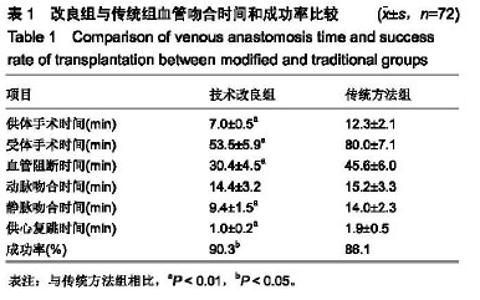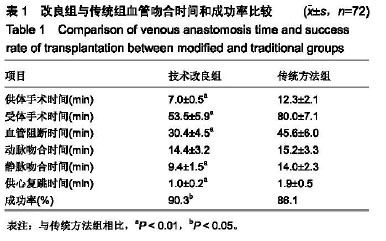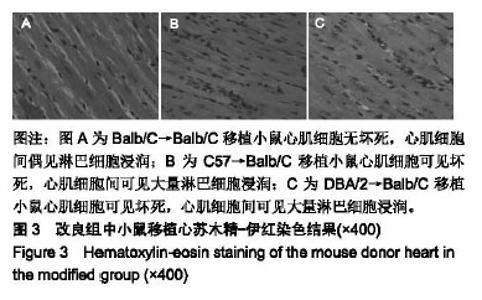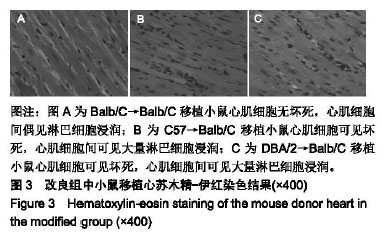| [1]Clark ES, Pepper VK, Best CA, et al. A mouse model of endocardial fibroelastosis. Cardiovasc Pathol.2015;24(6): 388-394.[2]Daly KP,Dearling JL,Seto T,et al.Use of [18F]FDG Positron Emission Tomography to Monitor the Development of Cardiac Allograft Rejection. Transplantation. 2015;99(9): e132-9.[3]Plenter RJ,Grazia TJ.Murine heterotopic heart transplant technique. J Vis Exp. 2014;(89). [4]Corry RJ,Winn HJ,Russell PS.Primarily vascularized allografts of hearts in mice. The role of H-2D, H-2K, and non-H-2 antigens in rejection. Transplantation.1973;16(4): 343-350.[5]Fukunaga N,Bissoondath V,Rao V.Submandibular Gland-preserving Technique for Heterotopic Cervical Heart Transplantation in Mice. Transplantation. 2018;102(11): e464-e465.[6]Ratschiller T,Deutsch MA,Calzada-Wack J,et al.Heterotopic Cervical Heart Transplantation in Mice.J Vis Exp.2015;(102): e52907.[7]Li C,Qi F,Liu T,et al. Improved Cuff Technique for Establishing a Mouse-Rat Heterotopic Cardiac Xenotransplantation Model. Transplant Proc.2015;47(6): 2026-2031.[8]Li Y,Xie B,Zhu M,et al.A highly reproducible cervical cuff technique for rat-to-mouse heterotopic heart xenotransplantation. Xenotransplantation. 2017; 24(6).[9]张松林,孙宗全. 应用Tail-cuff技术改良小鼠颈部异位心脏移植模型[J]. 中国组织工程研究与临床康复,2010,14(31): 5883-5886.[10]Gong W,Thornley T,Whitcher GH,et al.Introduction of modified cervical cardiac transplant model in mice. Exp Clin Transplant.2012;10(2):158-162.[11]Lu C,Zeng YQ,Liu H,et al.Tanshinol suppresses cardiac allograft rejection in a murine model. J Heart Lung Transplant. 2017;36(2):227-236.[12]Oh B, Furtmüller GJ, Sosin M, et al. A Novel Microsurgical Model for Heterotopic, En Bloc Chest Wall, Thymus, and Heart Transplantation in Mice. J Vis Exp.2016;(107): e53442.[13]Pilat N, Sabler P,Klaus C,et al.Blockade of adhesion molecule lymphocyte function-associated antigen-1 improves long-term heart allograft survival in mixed chimeras. J Heart Lung Transplant. 2018;37(9): 1119-1130.[14]Wang C,Wang Z,Allen R,et al.A modified method for heterotopic mouse heart transplantion. J Vis Exp.2014;(88): e51423.[15]李川,戚峰,刘彤,等. 颈部袖套法建立小鼠-大鼠异种心脏移植模型[J].中国组织工程研究,2013,17(5): 859-865.[16]苏松.介绍一种新型的小鼠腹部心脏移植方法[J]. 生物医学工程学杂志,2013,30(5):1108-1111.[17]郁雷,高丽.小鼠腹部心脏移植模型建立及并发症预防[J].中国胸心血管外科临床杂志,2014,21(2): 249-252.[18]Ren H, Zhang J, Wang H, et al. Everted Suturing of the Inferior Vena Cava Is Addressed in the Abdominal Mouse Heart Transplant Model. Exp Clin Transplant.2018;16(5): 588-591.[19]侯剑刚,王翔,丁强.不同品系间小鼠腹部异位心脏移植模型的建立和比较[J].中华实验外科杂志,2014,31(8): 1668-1670.[20]鲍春荣,梅举,丁芳宝,等.小鼠腹腔异位心脏移植模型方法改进[J].中华实验外科杂志,2013,30(12): 2748.[21]汪向飞,张国超,周汉新.建立小鼠腹腔心脏移植模型的方法改进[J].中国组织工程研究与临床康复,2010,14(53): 9965-9967.[22]Su S,Türk TR,Wu S,et al.Modified suture technique in a mouse heart transplant model.Asian J Surg. 2011;34(2): 86-91.[23]Al-Amran FG, Shahkolahi MM. Total arterial anastomosis heterotopic heart transplantation model. Transplant Proc. 2013;45(2): 625-9.[24]宋少华,徐春扬,郭猛,等.小鼠腹部异位心脏移植模型的建立与改进[J].第二军医大学学报,2018, 39(3): 280-284.[25]何莹, 宫念樵.心脏移植动物模型的构建[J]. 实用器官移植电子杂志,2016,4(2): 88-92.[26]Liu F,Kang SM.Heterotopic heart transplantation in mice. J Vis Exp.2007;(6): 238.[27]Schramm R, Schäfers HJ, Hamacher J,et al. Simplified technique for heterotopic vascularized heart transplantation in mice. Microsurgery. 2006;26(3): 212-213; author reply 213. |



